I see lots of images of blue ladybugs, and they look so beautiful that in fact …I really really want one! So I had to write about them. And like my investigations into Purple ladybugs, I really wanted to find out if a blue ladybug existed and if so which ones.
It wasn’t long before I realized there is a Blue Ladybug, so I’m happy to talk about that in the article. However, first, let me give you a quick takeaway answer, then I’ll dive into more detail…
Is there a blue ladybug?
Yes, there is a blue ladybug, despite many false portrayals of blue ladybugs on the internet, the Steelblue ladybug, called Halmus chalybeus is native to Australia and New Zealand. Described as blue/green and iridescent or blue metallic is round and almost dark, and translucent around the edges.
So What is a blue ladybug? A blue ladybug Halmus chalybeus, is a type of Ladybug that is native to Australia and New Zealand.
It has anatomy the same as all Coccinellidae and its eating habits and behavior are also akin to that of most other species of Ladybugs. Including how they Hibernate, how they protect themselves, and their mating habits.
Classification
- Phylum: Arthropoda
- Class: Insecta
- Order: Coleoptera
- Family: Coccinellidae
- Scientific Name: Halmus chalybeus
- (Boisduval, 1835)
- Family: Coccinellidae
- Order: Coleoptera
- Class: Insecta
So What Are the Blue Ladybug Pictures I See?
Because it would be really fabulous to have in real life a bright blue Ladybird, it’s completely understandable that people would resort to using Photoshop to generate the bright blue Ladybugs that sadly do not actually exist.
As I mentioned in my article about green ladybugs, it’s easy to use Photoshop to create just about any color of Ladybug you can imagine. And why not indeed. Here are some examples of wonderfully created Blue Ladybug images.
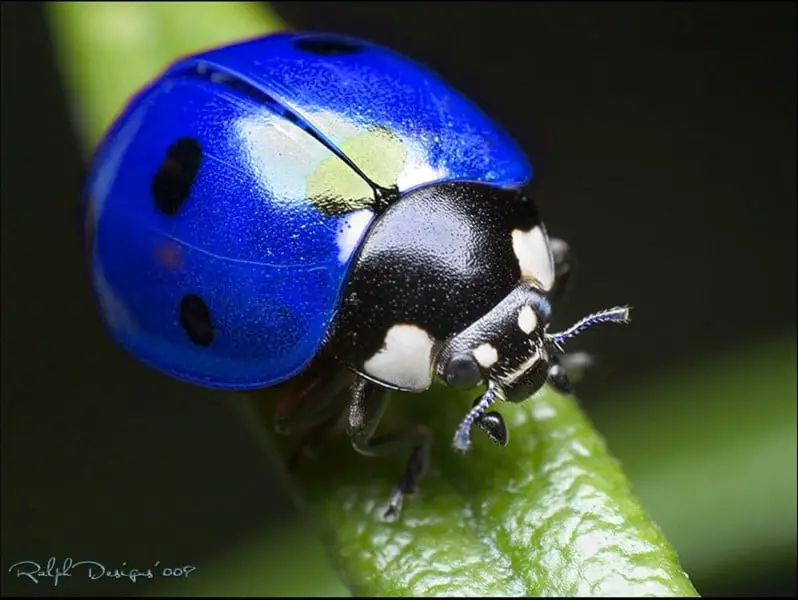
Blue Ladybug
Image Source Pinterest
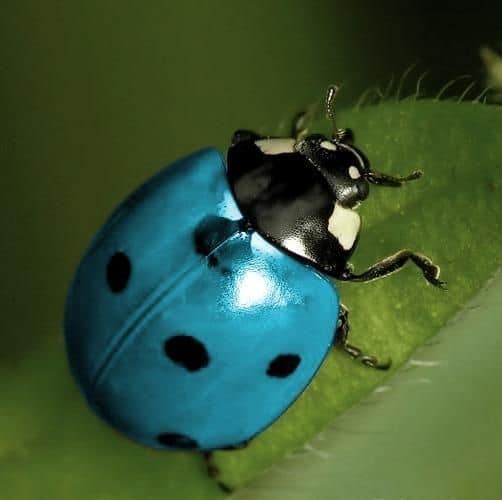
Blue Ladybug
Image Source – Pinterest
The difficulty then comes from those who see the results of the photoshopped images and believe that they do actually exist.
So let me just put the record straight and state that, aside from the Halmus chalybeus – Steelblue ladybug, the bright blue ladybird does not exist in reality – at least not that we know of.
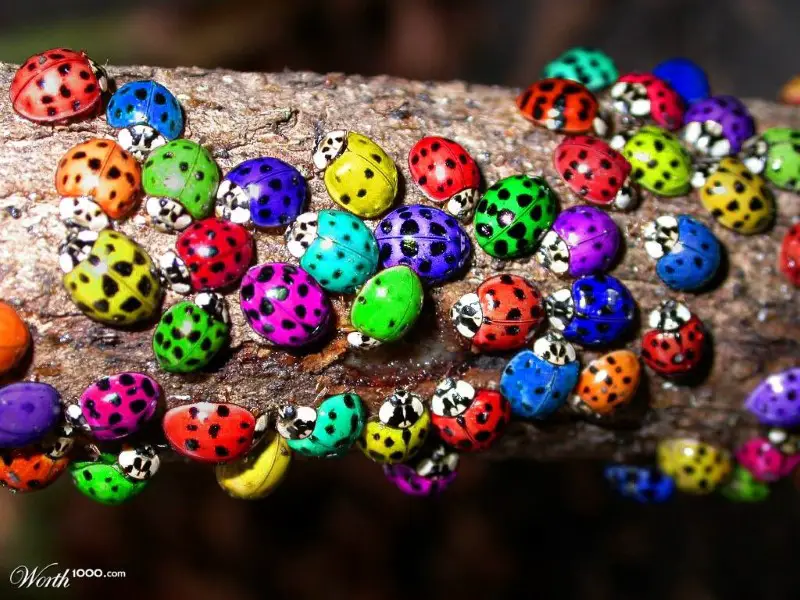
But could they exist…
Could Blue Ladybugs Exist?
And by that, I mean the bright blue Ladybugs!
Despite there being over 5000 species of ladybugs that have been documented from around the world.
No doubt there are still ladybeetle species and variants of ladybug species that may yet be waiting to be discovered.
We can only hope that at some point someone provides a genuine picture of a bright blue ladybug and I hear of its official discovery and subsequent documentation.
If and when they do, I’ll be the first (or maybe second) one to write about it.
Although I imagine, if it were true, it might well make the news headlines – and I’d have an entirely new article to write!
However, we mustn’t rule out the existence of more blue ladybugs, after all, there are other blue animals in nature that we already know of, here’s a list of just some of those creatures.
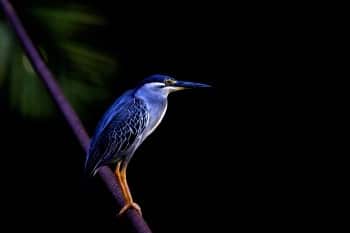
Little Blue Heron
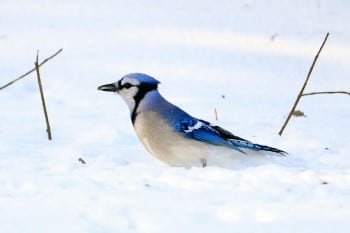
Blue Jay
Moon Jelly
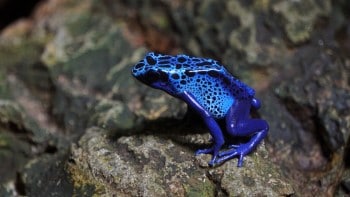
Blue Poison Dart Frog
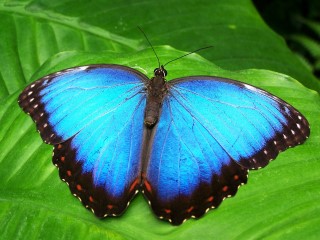
Menelaus Blue Morpho
And of course, we can’t forget an old favorite!
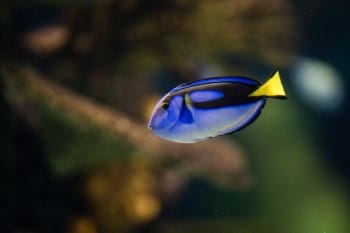
Blue Dory Fish
And I’m sure there are many more!
So whilst we live in hope …let’s move on to the only ‘blue ladybug’ we do know about. The Steelblue ladybug, Halmus chalybeus…
Steelblue Ladybug – the Only Blue Ladybug
There is little documented about the Halmus chalybeus, mainly as for the most part it just resembles the same characteristics that most other ladybugs do.
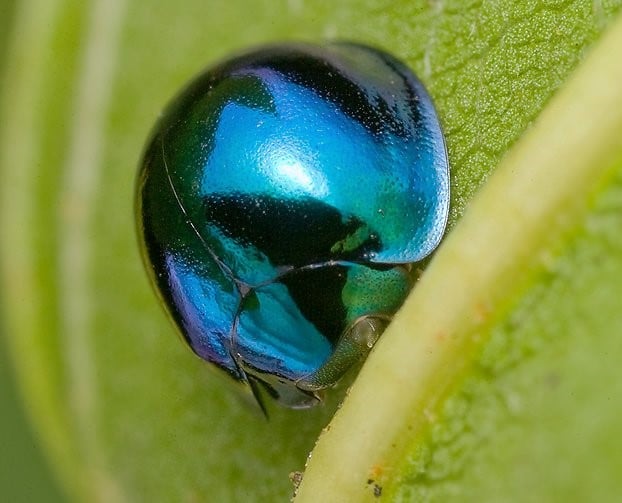
Female Halmus chalybeus – Steelblue Ladybug – Source: Reddit
Blue Ladybug Species Spread
Steelblue ladybugs were originally native to Australia. But as recently as 1899, a significant batch of Steelblue ladybugs was released into the warmer regions of New Zealand habitat in an effort to control the black scale, and later released again to control the Gum Tree Scale.
The natural habitat of the Steelblue ladybug is much the same as its other ladybug cousins. Commonly found in crops, backyards, parks, orchards, woodland, and fields.
Male-to-Female Differences
Unlike many other ladybugs, there is more distinction between the male and female Steelblue ladybirds. It’s usually quite difficult to tell the difference between most male and female ladybugs unless you know how to tell.
However, with the Steelblue ladybird, the male has a minor distinction which is a more orange color lower pronotum and head area. Whereas the female is the same blue/green color throughout their body.
Neither male nor female blue ladybugs have any spots, but they’re shell is the same material as all other Ladybirds.
Blue Ladybug Diet
Again like many ladybug species, they’re feeding habits focus mainly on scale insects. This differs only in that they are less prone to eating aphids. Perhaps in these regions, aphids are less of an issue. They are known to mainly feed on:-
- Psyllids (plant lice)
- Scale insects
- Moth eggs.
For a complete list of what most ladybugs feed on, then see my article on ‘What Ladybugs Eat’. Or perhaps you’d like to know What Eats Ladybugs!
Blue Ladybug Hibernation
Steel blue ladybugs hibernate (known as diapause) during the winter months of May to September. During this time they’re known to gather in groups under tree bark and other areas sheltered from frost, snow, and rain.
They emerge during Spring and set about finding food shortly before the mating season begins.
Did you know?
A group of ladybugs is known as a ‘Loveliness of Ladybugs’
Find out more interesting facts about ladybugs.
Do Blue Ladybugs Bite?
I have previously written an entire article on which ladybugs bite. Most ladybugs have the capacity to bite depending on the right circumstances and their size, but some are more likely to bite than others.
The Steelblue ladybug is not considered an aggressive ladybug. Certainly not enough to bite almost anything it comes into contact with.
Where Are Blue Ladybugs Found?
As mentioned earlier, Steelblue ladybugs are native to Australia, but due to their introduction over a century ago they’re also widely found in New Zealand.
No other reported sightings of Steelblue ladybugs have been documented outside of this region – which is quite surprising considering Australia’s close proximity to Indonesia.

Are Blue Ladybugs Rare?
The Steelblue ladybird is not rare in the sense that these blue ladybugs are not spread worldwide, they’re mainly only found in Australia and New Zealand, but they’re certainly not rare to find in these areas.
Blue Ladybug Meaning
It would be lovely to think that Steelblue ladybirds have a special meaning. But like most ladybugs, usually, their meaning is not necessarily linked to their color. Therefore, Steelblue ladybird beetles have the same meaning as most ladybugs based on the ways in which we encounter them. Mostly in love, luck, signs, and symbols.
What Blue Ladybugs Can You Get?
That doesn’t mean there aren’t good reasons to see and own ladybugs anyway, everyone likes blue ladybugs, so why not try out some of these types of blue ladybug gifts for friends and family…
Lucky-M Kids 7 Pieces Outdoor Sports Protective Gear
An ideal gift for your child, complete with a helmet and pads, and highly rated on Amazon.
Retro Beetle Ladybug Shape Quartz Pocket Watch Necklace Pendant Unisex Gifts
A great gift from Amazon for your child or a ladybug Fanatic you know!
Sterling Silver Natural Larimar Ladybug 18″ Pendant Necklace.
And I adore this beautiful Sterling Silver Necklace, with just a wonderful shade of blue without being overboard on the color!
Blue Ladybug – So finally
I am hoping to come back here one day …to write about an amazing discovery of a new variety of blue ladybugs. As soon as I do I hope you’ll be able to search again and learn all about it. Till then keep looking for blue ladybugs.

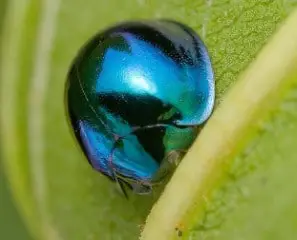

I am so happy to have found this article. Today I was in the park with my children and all of a sudden I felt something crawling up my shoulder, and usually at this point I freak but, when I looked and seen it was a BLUE LADYBUG!!! WHAT?! I let it crawl all up and down my arm and hand. Now this meant a lot to me today because blue is my favorite color and it was a ladybug so it was a sign from the universe to me AND it was a male.. uggh it had a crippled wing and I didn’t have my phone to take a picture so I put him down in the grass and left. I live in Florida by the way. I just wanted to share that experience with you and thank you for the information.
I’m glad you found the information helpful Livv, and thank you for sharing your Ladybug encounter! I wonder what type it could have been, I’m sure it will be ok.
A steel blue lady bug landed on me yesterday, they are beautiful
aww, yes, they almost seem magical, don’t they! Thanks for sharing that lovely thought Alysia x 🙂
We have them in Guam!
Ah, so they’ve made it over to Guam, thank you so much for sharing the information Ashley, I’ll update the map and article at some point 🙂
I just found a massive bush with about a Thousand of thees still blue ladybugs on I have never seen anything like it , we are in stone in Stafford so they are very much in this Country now .. very interesting 🤓
Hey Danielle, thanks for the comment, that’s interesting. Do you have any pictures you can Send Me? If you took any? And if I then get further reports that show a trend then I can update the article.
Really appreciate you letting me know 🙂
A friend & i found a steelblue lady bug in a park we were at. Very beautiful! We live in central Florida
Steel Blue Ladybirds/bugs are common now in NZ. Like tiny jewels, they are mainly found on citrus and feed voraciously on aphids, lessor or scale. This reduces black/sooty mould which is a big problem on citrus, rotting the fruit if not sprayed in time. My son and I have just reduced the height of our grapefruit tree and as we cut up the branches were very careful to puff any jewels back onto the tree. Sometimes lifting a leaf, you can find the whole underside is one whole mass of blue jewels. I will try and get a photo soon and send you.
Blue jewels … I like that 🙂
My coworker had one land on her in Ocoee, Fl, today. Which is the reason I googled this. She did take pictures. It was about 430 pm. The weather was cooler here today. She is a science teacher, and was quite surprised. With others commenting they too have seen them, I’m wondering where everyone is from and how common/uncommon is it. Your article seemed to explain metallic blue was not possible, but that’s what color it was. Could it eat something blue and turn blue?
Thank you for the comment Han, it may depend on the lighting, but I’d be able to know from a picture, so if you have one please feel free to email it over and I’ll take a look.
I just had one of these little guys land on me today here in West Palm Beach, Florida, U.S. I never knew they existed. This one had a bit of orange around the u derside edges and head as you described. I took a picture but it was a bit blurry. Have they migrated or been introduced to Florida intentionally, do you know?
Thank you Luanne, I’ve heard of them also now being present in other places – the UK is one of those places for example! Whether they can locate enough mates to reproduce and take hold is another matter.
If you can then please send me a picture and I’d be happy to take a look – but it sounds like you’ve identified it OK. How lovely!
I saw one of these in my hometown right on the north east coast uk last summer. I did take a close look and thought wow but didnt realise how rare they would turn out to be. I have a photo somewhere
I saw an almost teal blue ladybug in Bay Minette AL!
We are Waimea Hawaii and had one of these beauties. It was on the handle of my truck. Unfortunately the picture does not do it justice. It was metallic green blue. I had never seen anything like it before. I am thrilled to learn it is a ladybug. If you are email me I will send the picture.
Have some on my lemon tree in Manhattan Beach California!
Found one a couple of weeks ago in Lawndale, California. Looked like a male and I took a few pictures as I was surprised to see how metallic blue it was.
I had a steelblue ladybug in my kitchen today,it was gorgeous! I never saw one.
I Live in Holland
Hi there, just took pics and a video of a Blue Lady Bug in the lovely sunny Wairarapa New Zealand never ever seen one before very stunning metalic blue, no spots and walked all over my hand for around 10 mins before taking off again.
That’s lovely to hear! thanks, Julie! You guys are privileged to havee steely blues there.
That’s lovely to hear! thanks, Julie! You guys are privileged to have steely blues there.